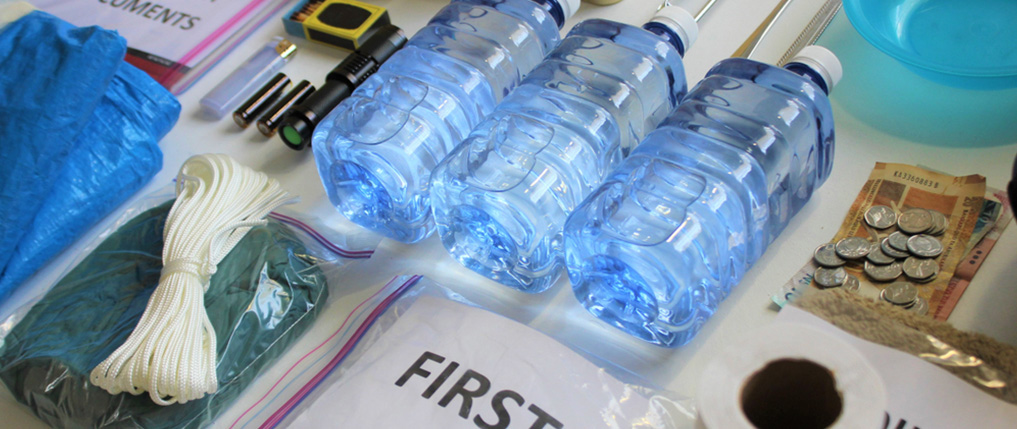Go Bag Checklist: What to Pack in Your Go Bag
June 15, 2020

None of us want to imagine what might happen in the event of an emergency, but — as scary as it is to consider — preparing for a disaster is crucial to ensuring the health and safety of you and your family. Having a well-derived disaster plan can mean the difference between life and death in potentially devastating situations, so it’s well worth your while to conceive. One of the facets of your emergency response plan should be to pack a go bag that you can grab and go should you need to flee.
What Is a Go Bag?
A go bag is an emergency preparedness bag designed to provide survival essentials for short-term disasters. They could provide life-or-death support in the face of a hurricane, flood, fire or any scenario where evacuation is necessary. This is different from a “bug out bag,” which is generally designed for multi-day survival and typically includes a tent or another protective element for overnight sheltering.
Whereas a bug out bag might be designed for 72 hours of emergency protection, a go bag is usually designed for 12 to 24 hours. The idea is to create a small, potentially life-saving capsule that you can grab in a split second should you need to rush out the door. A bug out bag may require a duffel bag full of supplies per person, whereas a go bag is smaller and more portable, often packed in a backpack. You might keep it in the closet by the front door or in the trunk of your car.
Do you really need one? It’s easy to dismiss emergency preparedness as being paranoid or extremist, but the reality is that making a go bag is easy, inexpensive and potentially life-saving. In fact, the Federal Emergency Management Agency (FEMA) recommends keeping at least 72 hours worth of emergency supplies on hand at all times.
Finding the Right Bag
The bag in which you pack your supplies is almost as important as the supplies themselves. Here’s why: You need a bag that’s protected against weather, damage and impact but that’s also lightweight and comfortable enough to carry should you have to tote it for hours at a time. We recommend creating a go bag using one of our heavy-duty backpacks because they’re water-resistant, comfortable and extremely durable. Create one go bag for each person in your household.
What to Pack in Your Go Bag
To determine what you need in your go bag, consider a full 24-hour day for you and each member of your family. Every single essential item you use during that period should have a place in your go bag.
- Water.The FEMA recommendation is a gallon of water per person per day. At least one filled, reusable water bottle is a good place to start.
- Food. Lightweight, shelf-stable and nutritionally dense foods are best, including freeze-dried fruits, energy bars, nuts, tuna pouches and beef jerky.
- Medication, including a day or more’s supply of your prescription medication and travel-sized versions of over-the-counter pain relievers, antacids, etc.
- A NOAA Weather Radio to help you monitor the weather and transmit alerts.
- A first-aid kit with bandages, gloves, a face mask, gauze, medical tape, antibacterial cream, a cold pack and a thermometer.
- A multi-tool with a knife and basic tools, including a screwdriver, pliers, wire cutters and scissors.
- A light source, such as an LED flashlight (LEDs last much longer) or a headlamp. Also pack backup batteries and matches in case your light source goes out.
- Personal items, including a toothbrush, toothpaste, hairbrush, deodorant, tampons and pads. If you have kids, pack diapers and wipes.
- An emergency blanket and a foldable weather poncho for protection and warmth.
- A cell phone charger, preferably one that’s solar-powered.
- Money and personal documents. Cash in small bills is best. Be sure to have your personal documents, including your passport and birth certificate, ready to throw in your go bag at the last minute as well.
- Paper maps and a compass. You may also want to consider keeping maps downloaded on your phone so they’re available without service.
- Pet supplies if you have pets. Pack a day’s worth of food and water for your pets. Keep a leash or a carrier nearby or inside the bag.
Be Prepared for Anything
At the end of the day, the point of any kind of emergency preparedness kit is to keep your family safe no matter what happens. Luckily, putting one together is relatively simple and affordable, so there’s no reason not to do so. It’s always better to be safe than sorry!
RELATED PRODUCTS

SIGN UP FOR EXCLUSIVE OFFERS
Sign up for our newsletter and get exclusive access to new product launches, special offers and much more.
RELATED BLOGS


















